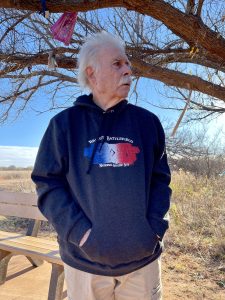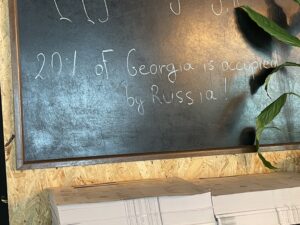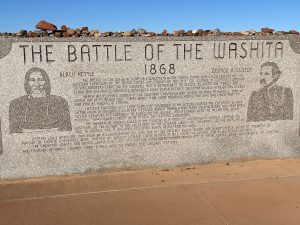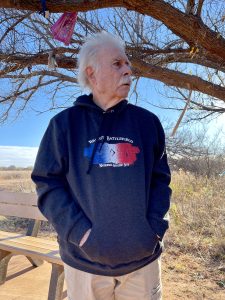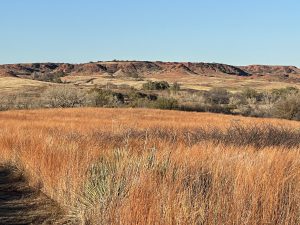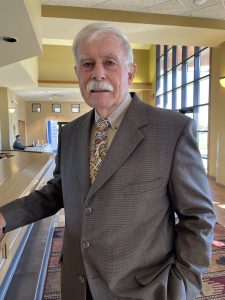
Israel’s soldiers killed three former Israeli Jewish hostages December 15, 2023 in the Gaza Strip. According to Israeli Defense Forces accounts the three men were unarmed and shirtless. They carried a white flag with the word “HELP” written in Hebrew. The men cried out to the soldiers for help in Hebrew as they held their arms up while emerging from a building. The Israeli soldiers immediately shot and killed two of the men and wounded the third man who retreated back into a building. The soldiers followed him, and even after their commander ordered the firing to stop, the soldiers killed the third man.
Israel called the incident a “tragic accident”. But the killings were intentional, not accidental. Those three killings of unarmed Israelis were the same as the 20,000 intentional killings of Palestinian civilians by Israel since the October 07, 2023 intentional killings of 1,200 Israelis by Hamas.
Israel is responsible for the destruction of water resources, hospitals, mosques, churches, businesses and homes in Gaza. By preventing humanitarian aid to civilians in Gaza, Israel is responsible for the endemic disease, thirst and starvation of up to 2.2 million Palestinians, 70% of whom are women and children. The armaments, money and political cover given to Israel by the United States enable this deliberate genocide.
Israel asserts that by dropping leaflets that order civilians to abandon their homes Israel is absolved from killing them. But the people have nowhere to go as the 2.2 million Palestinian civilians in Gaza have the Mediterranean Sea to their north, Egypt to their west and are otherwise surrounded by Israel. Egypt and Jordan have taken some refugees in but have no obligation to do so. Israel is responsible for the humanitarian crisis in Gaza and should be mainly responsible for assuaging it.
Gaza is an area of 360 square kilometers and Israel has 22,143 square kilometers. If, in fact, Israel wishes to avoid civilian casualties, it should allow the Palestinian civilians to shelter inside Israel, especially East Jerusalem, until the war ends and Gaza is re-built for human living. Border crossings from Gaza into Israel could be opened with quick and efficient security checks. Aid from the United States could provide temporary shelters, food, water and medical care. Great Britain, that created Israel out of Palestine starting in 1917 through 1948, also could and should help provide border security and humanitarian aid.
A reasonable alternative, if Israel does not wish to have the Palestinian civilians sheltered within the borders of Israel, would be to have non-Hamas Palestinians moved to the current illegal Israeli settlements in both Gaza and the West Bank. These areas are already free of Hamas fighters and have shelters, water, medical facilities and security checkpoints in place. The illegal Israeli squatters would have to be ordered to vacate the areas. But that is already called for by international law. If East Jerusalem, Gaza and the West Bank were used to shelter Palestinians, that would be consistent with the pre-1967 borders and consistent with the Oslo Accords for a two-state situation.
Of Gaza’s 2.2 million population, at the most 40,000 are with Hamas. Screening the refugees would not be onerous as anyone who has walked through a magnetometer or who has been scanned with a hand-held unit can attest. Once the conflict ends, that is, once Israel is satisfied Hamas is no longer a threat, the United States, Great Britain, Israel and the United Nations could carry out a Marshall Plan to repatriate the Palestinians or the state of Palestine could finally be established.
The United States is almost alone in its support of Israel’s genocide of Gaza’s Palestinians. The United Nations has called repeatedly for a humanitarian ceasefire and humanitarian aid to Palestinians, but until December 22, 2023 the U.S. blocked such action by veto. Finally, the U.N. Security Council managed to pass a weakly worded resolution allowing some humanitarian aid; the United States abstained. However, Israel has indicated it will not cooperate with the resolution, so innocent civilians will continue to be killed by Israel and those not directly killed by Israeli military action will die from or be degraded by deprivation of basic humanitarian necessities.
Why is America putting its prestige on the line to support Israel’s position? The answer may lie in history. Israel claims its god gave Palestine to the Hebrew people and helped them escape bondage in Egypt. Most estimates are the Book of Exodus was written during the 13 century B.C. A part of that divine intervention was the killing by Israel’s god of the first-born child of every Egyptian from Pharoah’s, to those of prisoners in dungeons and even the first-born of maidservants. The Israelis still celebrate this genocidal slaughter of innocent humans on Passover. Also, their god caused the Red Sea to part and drown all of Pharoah’s army. Then, according to the Jewish myth, their god gave the Hebrews the land already owned and inhabited by the Canaanites and others. See the Book of Exodus, Chapters 10-13.
Many of our early American ancestors of mainly European descent believed their Christian god gave us mainly white Americans all the land from the Atlantic Ocean to the Pacific Ocean, Manifest Destiny, even though it was already inhabited by millions of Native Americans. And just as Israel has demonized Palestinians as terrorists for many years, America’s Declaration of Independence describes Native Americans as:
“He (King George III) … has endeavored to bring on the inhabitants of our frontiers, the merciless Indian Savages, whose known rule of warfare, is an undistinguished destruction of all ages, sexes and conditions.”
The cultural memories and Volksgeists of America and Israel are strikingly similar and the religions of both assuage any moral dilemmas from eliminating the original inhabitants of coveted land and resources by any means deemed necessary. The German philosopher Friedrich Carl von Savigny (1779-1861) and the Austrian philosopher Hans Kelsen (1881-1973) described these memories as the Volksgeist or spirit of a people. And the German psychologist Sigmund Freud (1856-1939) said these subconscious suppressed memories can actuate behaviors. Carl Gustav Jung (1875-1961) was a Swiss psychologist and psychiatrist who posited humans act and react as archetypes based on historical myths that are sometimes misinterpreted or misapplied.
What this may mean for America is we Americans often see ourselves as always doing good. As French sociologist Alexis de Tocqueville (1805-1859) said, “America is great because she is good”. Many of us tend to believe that whatever we do is divinely inspired and cannot be wrong. Israel may see itself as an historic victim that must always be in a self-defense mode, a Volksgeist of being in constant fear of annihilation. And many of us Americans have often seen ourselves as that miraculous shining city on a hill that gives light to the world and is always on the side of right.
That may be why Israel and America stand virtually by ourselves on the developing genocide in Gaza. We both may need to re-examine the validity of our myths and the morality of our actions.
